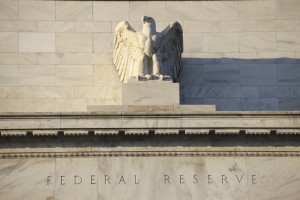Break up Big Banks or Tax Leverage: How Will Fed Officials Solve “Too Big to Fail”?
Federal Reserve Bank of Minneapolis President Neel Kashkari’s call to break up the big banks has reopened a debate about whether the United States has done enough to prevent another financial crisis of the magnitude that the global economy experienced in 2008.
While the source of this call for action may lack power to set the Fed’s macroprudential policy, one nonetheless might find it surprising coming from a former Goldman Sachs executive who, when serving under then-US Treasury Secretary Henry Paulson, led the program to bail out the largest US banks. But while Kashkari was a self-described “first responder” to the financial crisis in seeking bailout funds, he notes that at the time, there were but two options — “both bad”: stabilize the financial sector through cash infusions; or risk a potential Great Depression.
Since then, regulators have imposed a number of requirements, all aimed at shoring up financial institutions to withstand future shocks without sending the economy into a tailspin and requiring cash bailouts from Congress. There are new stress tests, capital and total loss–absorbing capacity requirements, a living will process, to name a few. And let’s not forget the oversight function of the Financial Stability Oversight Council, although it has become an object of criticism following its less-than-transparent process of deeming certain institutions systemically important financial institutions (SIFIs) and questioning the resiliency of the asset management industry.
But Kashkari believes that the measures implemented under the Dodd-Frank Act did not go far enough. Instead, “the biggest banks are still too big to fail and continue to pose a significant, ongoing risk to our economy.” He is not alone: a number of Federal Reserve officials over the years have expressed concern with the system and called for significant new measures. Now calling for “bold, transformational solutions to solve this problem once and for all,” Kashkari announced that his bank will lead efforts to study the problem and seek solutions that will allow banks to make mistakes — even fail—without requiring bailouts from the government.
In particular, he has already noted several options that should be considered, including:
- Break up large banks into smaller, less-connected, less-important entities.
- Turn large banks into public utilities by forcing them to hold so much capital that they virtually can’t fail (with regulation akin to that of a nuclear power plant).
- Tax leverage throughout the financial system to reduce systemic risks wherever they lie.
The first of a series of spring bank symposiums kicks off on 4 April, with recommendations slated for release to legislators by the end of the year. The process is open to the public (livestreamed) and will feature researchers, policy makers, regulators, and representatives from the financial industry.
Knowing that his very public stance on this will not be without controversy, Kashkari nonetheless intends to forge ahead to lead the bold voice for reform. In possession of a bold voice of your own? There now is a specially created website just waiting for those with ideas on how to reform too-big-to-fail. (Learn more about the issues on the Systemic Risk Council website: www.systemicriskcouncil.org. Sponsored by CFA Institute, the Council addresses reforms needed to protect the public from financial instability).
If you liked this post, consider subscribing to Market Integrity Insights.
Image Credit: iStockphoto.com: Veni

